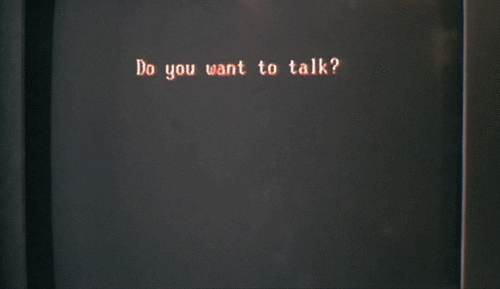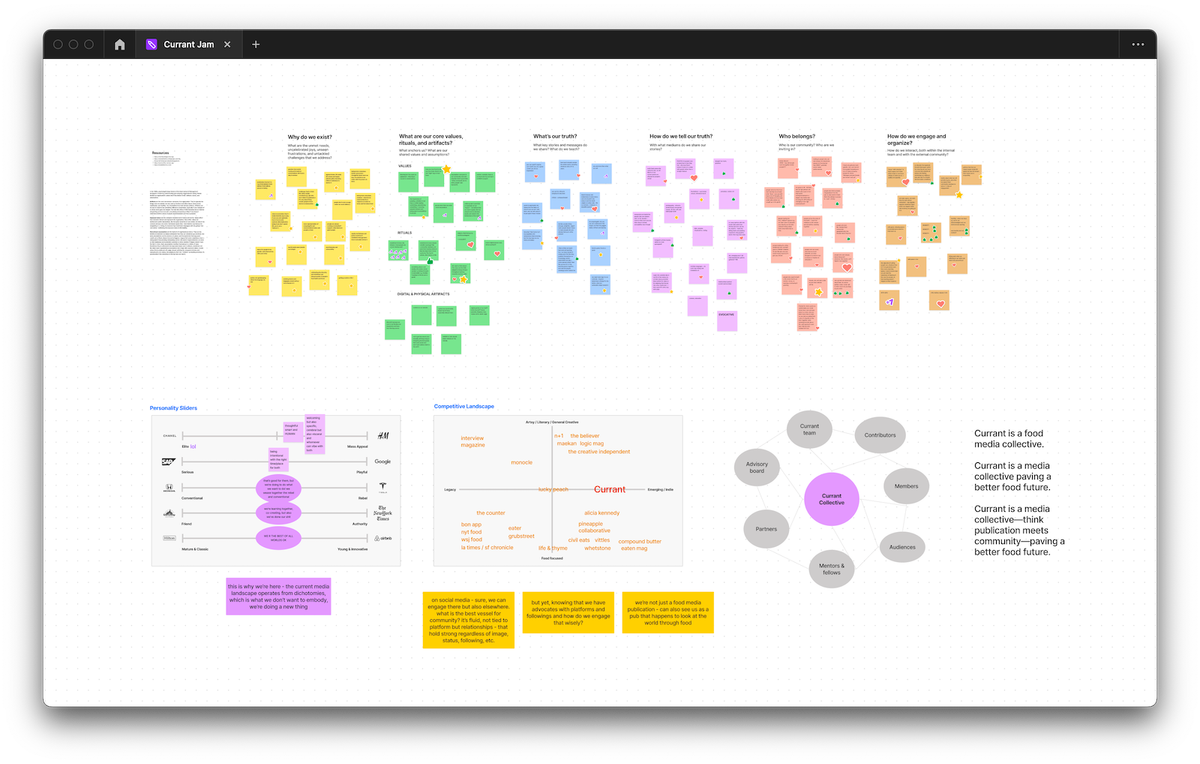When we publish content on behalf of a business — for any reason at all — we are always making an argument. We are always floating an idea for our audience to accept or reject. How can we bring ideas to the forefront of content production?
In the first two stages of The Content Technologist approach, we've
- Defined the why, how, where, and for whom your organization creates content, connecting the audience needs to business goals (content strategy)
- Established the legal and administrative structures required for content to be produced, and to succeed, at an organization (content administration)
In March, we're shifting into the third phase, content production, truly where the rubber meets the road. Content production comprises the operational and creative processes of developing individual pieces of content that support an defined strategy.
Production overlaps a bit with the following two phases—distribution and style—but eventually stands on its own as the processes that generate the actual content product, whether it's deployed as marketing, internal communications, PR, advertising, microcopy, social media posts, what have you.
We'll cover to the all-important operational part of production later this month. But today, I want to address the elephant in every room, the dimension that separates the amateurs and hobbyists from the content professionals: ideas.
Ideas are more than topics
The word "idea" assumes a variety of meanings depending on who's using it. Internet searchers and ChatGPT users often assume the word "idea" means "topics" or "themes," as in "What are some ideas for a child's birthday party?" or "What are some ideas for blog posts?" The word "idea" can also mean "thought" or "notion" or "any combination of words, phrases, or concepts" that pops into your head. It can be synonymous with basic concepts like "imagination" or "thinking."
And when you ask the computer for ideas, it's ostensibly because you could not imagine your own.
Today we're going to blow past that basic conception of "idea" because hey, we are all knowledge workers with college degrees or equivalent professional experience. We know how to generate concepts and topics without asking a robot (at least I hope so). We're going to go straight toward the Don Draper conception of "idea," which is more in line with "argument," "theory," or "reason to exist."
When Don Draper asks, "what is the idea?" he is not asking for a summary of the ad's plot. He's asking why the ad's collection of concepts will appeal to the audience with the ultimate goal of selling the product.

I admit: I give the fictional character of Don Draper far too much brain space probably because he represents a creative archetype I encountered during higher education and in my early professional experience. Let's put the Freudian bits aside (they are part of the idea, too, but we don't need to go that deep). Instead, let's return to the fundamental purpose of content: to communicate.
When we probe a content idea (in the Don Draper view), we interrogate: why are we producing (or altering) communications in the first place? By creating this individual piece of content, which may be the first piece of communication our audience ever sees from us, what are we saying about our brand?
In the past decade or so of content marketing and web self-publishing, many businesses ignored the idea phase of content, focusing only on the immediate outcomes (traffic or revenue) and giving little thought to brand reputation.
But when we publish content on behalf of a business — for any reason at all — we are always making an argument. We are always floating an idea for our audience to accept or reject. Otherwise, why are we speaking if we do not have something to say?*
*And if different versions of our content have diverging ideas—such as the pharmaceutical brand concurrently running ads with slogans "nothing is everything" and "control is everything"—will our audience understand what our brand or product actually provides? Or will potential customers who see both the A and B variations become hung up on the fact that those two slogans kinda sorta convey extremely different ideas?
Clearly I'm speaking from personal experience, but these commercials weird me out! The ads have been on for months and I still don't know what the drug they're advertising cures. Perhaps it converts its patients into nihilists or fascists, depending on which slogan the patient buys.
Noodling on ideas should happen before production begins
When editing writing or guiding clients on creating content, it's helpful to start poking at the idea as early as possible in the production stage. Production teams in business content should remember that they are exploring a point of view on behalf of a brand, and that there are many ways to present that point of view.
Far too often, inexperienced writers and nascent content operations think that content existing, without technical errors, is enough to make an impact on the bottom line. That words and sentences strung together, structured according to the brand's taxonomy, connecting with proper syntax, is sufficient attract an algorithm or an audience.
But at this point, even the worst AIs can produce grammatically correct content that simply exists to explain. Which means that, as search engine updates reward higher quality content, having a perspective and unique, holistic approach to a topic will differentiate the brand linguistically and ideologically, ultimately driving audience engagement.
I'm not saying that all content needs to be rooted in a hot take (please, anything but that!). What I want to clarify is that, before production of individual pieces of content begin, creators should be clear on the content's raison d'etre. They should understand the brand's perspective on the topic and be able to incorporate it into their writing.
The brand perspective and reasoning should be added to a strategic brief if that's part of the content development process. And if the content doesn't have a reason to exist, the production team may want to raise the following questions before diving into planning:
- Can you clarify what you want the audience/user to think after encountering this content?
- Which of these 2-3 views for this topic do you think align most closely with what our audience needs most?
- Is there anything unique about your product or brand's thinking that you want to introduce with this piece of content in particular? Is there an aspect of the content strategy you really want to highlight?
- This brand value seems to align nicely with this topic. Here's how I think the value and the topic can work together to create a point of view. Do you agree?
Why content ideas go awry
When given a list of keywords for "SEO writing," inexperienced writers interpret the keyword list as a defined list of topics, write a few hundred words explaining the definition of a keyword, potentially address the "people also ask" questions, and then complain that they never get to experience their creativity.
And while their employers (publishers, brands, or otherwise) publish the content, they're missing the point as well: the anodyne content that checks all the boxes may attract information-seekers and temporarily attracts eyeballs, but it doesn't contribute to long-term return on investment. It's the point of view and idea that connects brands to audiences, not the content's presence.
But for brand authority to grow, for audiences to care, a keyword or concept is the genesis for the idea, not the idea itself. The keyword ignites the spark for creativity, and the writer can present several researched ways of approaching a topic that center the keyword or ideas.
The act of writing, of creating content, means presenting your business' point of view on that topic. It means that your business or brand chose to prioritize that content over something else on the to-do list, and the content's reason to exist should be clear when production starts.
Otherwise, the production team will create its own reasons for the content's existence or just produce what they assume is correct. Those assumptions, taken to the end of production, can demolish the content's intended effect. The content might not ever be published, or if it is, the consequences might be worse than no content at all.
Considering ideas from the brand level
I'm aligned with Don Draper (a fictional character created by another writer who also values ideas) in thinking that the idea should be the center of discussion before the content story is created. Because if the idea is flimsy or pedantic, the audience will reject it without discussion.
Ideas are baked into some professional content development processes. In journalism, the idea of news should always be, y'know, new, or relevant to something happening that's top-of-mind. Even for long-term, high-impact features, if the newness of a topic isn't immediately evident to the audience, editorial discussions will steer the writer to the "what's happening now" angle, rather than relying only on historical research. Whether you're at CNN or a community newspaper, the brand of news is always "new."
And in Hollywood, movie endings may be rewritten when the actions of the characters don't gel with the point of the story. In one of my favorite ending rewrites, John Hughes revamped the finale of Pretty in Pink because he didn't want to convey the message that rich kids and poor kids would never get along. And so, Andie ends up with Blane instead of Duckie, even though Duckie is far more singularly focused on loving Andie.**

Although many companies invest in content development, few give the ideas the scrutiny they deserve. Some avoid conversation altogether, fearing that someone, somewhere could be alienated. Few consider that participating in a conversation—or starting a conversation that builds like a snowball rolling downhill—will likely be to their advantage.
**A good decision on her part. Duckie's a bit creepy. I always hoped she dumped both of them and found a new boyfriend in college.
How brands can shift to idea-first content
Brands often get so stuck on the act of creating content that they don't consider the range of impact their ideas can have. If a brand treats its audience like a bunch of beginners who are starting from scratch when publishing content about a topic, it's unlikely they'll attract experienced buyers who are ready to purchase.
If a brand only ever publishes ideas based on conversations with the sales team or existing customers, the content that's developed will likely result in more-of-the-same types of clients and customers. That's fine if the niche is working, but not if the brand is pursuing growth outside their current market.
And if the brand publishes content with the sole intent to go viral and not to connect the content with any long-term messaging or idea, it's unlikely the sales bump they experience from virality will correlate with ongoing results.
Brands who want to highlight ideas before heading into production processes can start by asking:
- Why will our potential audience (existing customers/clients, colleagues, or new customers/clients) care about this piece of content?
- What are the unique or distinctive ideas our brand has about the topics we want to develop content about?
- Why is the writer or team we're collaborating with the best choice to move our ideas forward?
- Does we have evidence that this idea matters to our audience? What assumptions are we making about why the audience will care about this content?
- If we want to build a suite of content around a core idea, what are the discovery points that will help us find the audience most receptive to that idea?
- Can we articulate why we are publishing this content now? Why will our audience choose this content over others?
- Are there other ways we could approach this topic? If we were to go in another direction, what would that idea entail? If we were to change the point of view, would it radically alter the idea, or would it bring the audience in closer?
- Are our writers, collaborators, and production teams making the best decisions regarding our brand's point of view, or are they making the first decisions that come to mind? Are we giving them space and time to explore ideas before committing to an approach?
- If someone were to argue with this content, how and why would they do so? Would the idea stand up under scrutiny?
- How will customers or clients who are not supportive of or used to this idea react?
If you're choosing to explain one topic over another from a list of keywords, that topic should mean something to your business. Maybe it educates or even prequalifies potential customers who are researching so the sales team doesn't need to explain the concept anymore. Perhaps it articulates that the concept is deeply relevant to your product's core capabilities.
Or, if you're choosing to create customer service content instead of developing content to attract new customers, the idea is to support customers while troubleshooting. What does the content need, from a production capacity, to be truly supportive? What's the minimum viable product... and how will the support content you create exceed the MVP or develop the connection with the audience?
Handpicked related content





